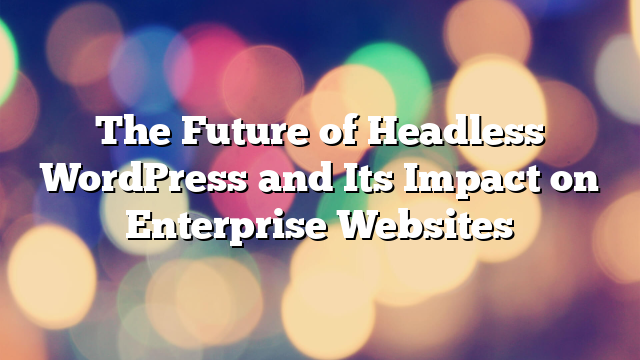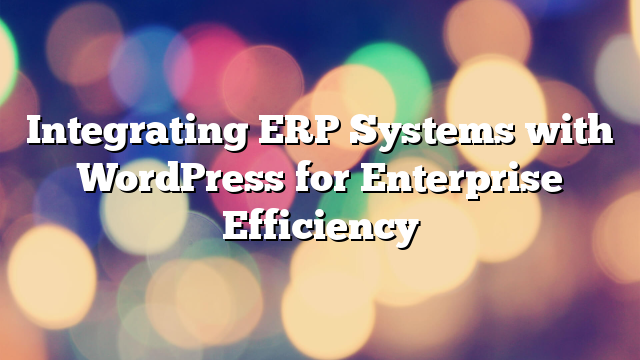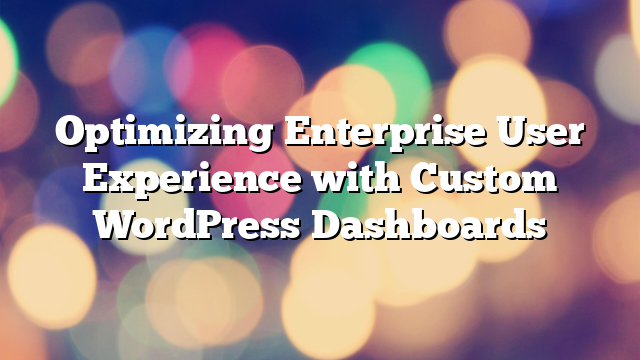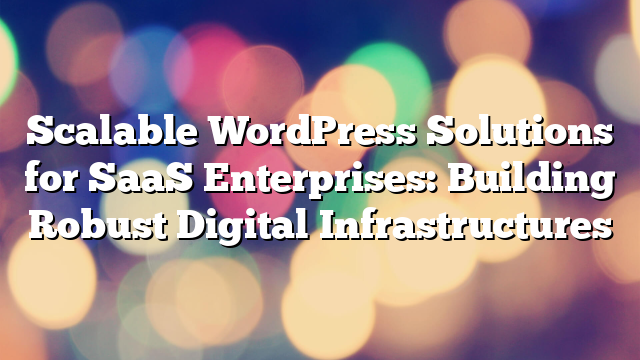The Future of Headless WordPress and Its Impact on Enterprise Websites
13.01.2025

As businesses move toward more dynamic and performance-driven digital experiences, Headless WordPress has emerged as a powerful solution for building modern, scalable enterprise websites. By decoupling the front-end and back-end, Headless WordPress enables enterprises to create more flexible, high-performing websites that can deliver faster, more personalized user experiences. In this article, we will explore the future of Headless WordPress and how it will shape the enterprise web development landscape.
What Is Headless WordPress?
Headless WordPress refers to the practice of using WordPress as a content management system (CMS) without its traditional front-end. In a typical WordPress setup, the CMS controls both the back-end (content management) and the front-end (how the content is displayed on the website). With Headless WordPress, the CMS is separated from the front-end, and content is delivered via an API to any front-end framework or technology, such as React, Angular, or Vue.js.
This decoupled approach allows enterprises to create a more customized and optimized user interface, improving website performance and scalability while still benefiting from WordPress’s robust content management features.
Why Are Enterprises Turning to Headless WordPress?
1. Flexibility and Customization
One of the primary reasons enterprises are adopting Headless WordPress is its flexibility. By decoupling the front-end from the back-end, businesses can use any front-end framework they choose, enabling a fully customized user experience. This is especially beneficial for large enterprises that require unique features, interactive content, and integrations with other platforms. With Headless WordPress, enterprises can push the limits of design and development, creating engaging digital experiences that align with their brand’s vision.
2. Improved Performance and Speed
Performance is a critical factor for enterprise websites, particularly as they scale to handle high volumes of traffic. Traditional WordPress websites can struggle with speed, especially when dealing with heavy content, complex themes, and third-party plugins. Headless WordPress solves this problem by serving content through APIs, allowing the front-end to be optimized for speed and performance.
By using technologies like static site generation or server-side rendering (SSR), Headless WordPress websites can load faster, improve search engine optimization (SEO), and deliver a better user experience. This is crucial for enterprises that need to deliver fast, reliable websites to a global audience.
3. Omnichannel Content Delivery
In today’s digital landscape, enterprises must deliver content across multiple channels, including websites, mobile apps, IoT devices, and digital kiosks. Headless WordPress allows businesses to manage and distribute content seamlessly across these channels through APIs. Instead of duplicating content across different platforms, enterprises can centralize their content in WordPress and distribute it wherever it is needed.
This omnichannel approach helps create a consistent brand experience across all touchpoints and allows businesses to reach their audience wherever they engage with digital content.
4. Scalability
Scalability is crucial for enterprises with growing websites and increasing traffic. Traditional WordPress setups can face challenges when scaling, as adding plugins, content, or features can slow down the website’s performance. Headless WordPress offers a more scalable architecture, as the front-end and back-end can be independently scaled. This means that enterprises can optimize their back-end for content management while scaling the front-end to accommodate higher traffic loads.
Moreover, since the front-end can be developed using modern frameworks like Next.js or Gatsby, enterprises can leverage server-side rendering, static site generation, and content caching for even better performance and scalability.
The Future of Headless WordPress for Enterprise Websites
1. Increased Adoption of Modern Front-End Technologies
As Headless WordPress continues to evolve, we can expect an increase in the adoption of modern front-end technologies. Frameworks like React, Angular, and Vue.js will become even more popular as they provide the flexibility and performance needed for creating complex, interactive user interfaces. These technologies allow enterprises to build fast, dynamic websites that can meet the demands of modern users, from interactive e-commerce platforms to enterprise-grade portals.
With Headless WordPress acting as the content hub, these front-end frameworks will continue to evolve and push the boundaries of what’s possible in web development.
2. Enhanced API Integrations
The future of Headless WordPress will see more seamless API integrations with third-party services, CRMs, marketing platforms, and business tools. As enterprises rely on a wide range of software solutions to manage operations, Headless WordPress’s ability to integrate with these tools via APIs will become increasingly important.
For example, businesses can integrate e-commerce platforms like Shopify, customer relationship management (CRM) systems like Salesforce, and marketing automation tools to provide a unified user experience across all platforms. These integrations will make Headless WordPress even more powerful and versatile for enterprise applications.
3. Greater Focus on Content Personalization
Content personalization is one of the key advantages of Headless WordPress. As businesses look to provide more tailored experiences for their users, Headless WordPress’s decoupled structure will allow for greater flexibility in creating personalized content. By leveraging APIs, enterprises can serve dynamic, user-specific content based on customer behavior, preferences, and location.
In the future, enterprises will rely more on AI-driven content recommendations, personalized shopping experiences, and localized content delivery to enhance customer engagement and boost conversion rates.
4. Security and Maintenance Improvements
Security will continue to be a priority for Headless WordPress websites. Since the front-end is decoupled from the back-end, security vulnerabilities in one part of the system do not automatically affect the other. Additionally, Headless WordPress allows enterprises to implement their own security protocols, such as custom authentication methods and data encryption, to ensure sensitive data is protected.
As security becomes an even more significant concern for enterprises, Headless WordPress will evolve to meet these demands, with improvements to API security and real-time monitoring systems.
Conclusion
Headless WordPress is undoubtedly shaping the future of enterprise web development. With its ability to provide flexibility, improved performance, scalability, and omnichannel content delivery, it’s no surprise that more and more enterprises are adopting this modern approach to content management. As the technology continues to mature, we can expect even more powerful integrations, personalized experiences, and enhanced security features.
Enterprises looking to stay ahead of the curve should consider adopting Headless WordPress for their next website project to deliver a high-performing, future-ready solution. Contact AllWebDev today to explore how Headless WordPress can help your business achieve its digital transformation goals.



